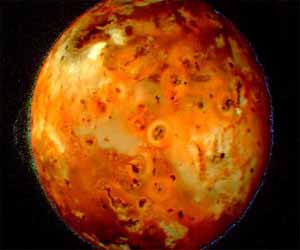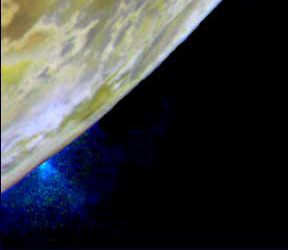|
|
Jupiter Moon Io
Tweet
AstroMaster 70 AZ Refractor Telescope
- Telescope for both terrestrial and celestial viewing.
Celestron 127EQ PowerSeeker Telescope - An affordable and high quality telescope.
BARSKA 40070 Starwatcher Compact Telescope - An ideal entry-level telescope for amateur astronomers.
Meade NG-70 70mm Refractor Telescope - A quality refracting telescope for land or sky viewing.
Celestron 127EQ PowerSeeker Telescope - An affordable and high quality telescope.
BARSKA 40070 Starwatcher Compact Telescope - An ideal entry-level telescope for amateur astronomers.
Meade NG-70 70mm Refractor Telescope - A quality refracting telescope for land or sky viewing.
Facts and Information
Io - The volcanic moon
 The colorful Jupiter moon Io, the most volcanically active body in the solar system
The colorful Jupiter moon Io, the most volcanically active body in the solar system
Volcanic Eruption
 Giant plume from Io's Tvashtar volcano
Giant plume from Io's Tvashtar volcano
Io Facts
- Io is the fifth moon in distance from the planet Jupiter.
- It orbits Jupiter at an average distance of 262,000 miles (422,000 km,) similar to the distance the Moon orbits Earth.
- Io is the third largest of Jupiter's moons and very similar in size to our own moon.
- It is the most volcanically active object in the solar system.
- Volcanic plumes rise almost 190 miles (300 km) above the surface.
- Io has an iron core just like Earth, meaning it could have its own magnetic field.
- The moon's orbit cuts across Jupiter's powerful magnetic field producing 400,000 volts of electricity across its surface.
- Jupiter's magnetic field strips off 1 ton of material from Io every second!
- The moon was discovered in January 1610 by the Italian astronomer Galileo Galilei.
- Io is often compared to a pizza due to its unusual surface which is made up of sulphur dioxide deposits.
Surface, Atmosphere & Temperature
Io's Surface
Jupiter's huge gravity causes Io's surface to bulge up and down by as much as 100 meters! This also generates tremendous heat inside Io, turning its subsurface into liquid.
This molten lava frequently escapes causing its surface to constantly change.
Io's Atmosphere
Io's atmosphere is roughly 1 millionth as dense as Earth's atmosphere and made primarily of sulphur.
Io's Temperature
Temperatures on Io vary from extremely hot to extremely cold. Areas which feature volcanic activity can reach temperatures of over 2000C (4000F). Away from these areas
however will see temperatures plunge to -143C (-230F).
Origin of Name and Life

The spectacular surface of Io with volcanic plume
Origin of Name
Io is named from Greek mythology after the priestess of Hera who became a lover of Zeus. See Europa for a more detailed explanation.
Life on Io
Io is an extremely hostile environment with little or no chance for the
existence of life.
Io - The Volcanic Moon

Images & Video
Volcanic plume


Io Rotation
Artist impression of Io's surface


Future and Past Missions to Io
Europa Jupiter System Mission
 Launch: 2020
Launch: 2020Agency: NASA/ESA
A joint venture by NASA and the ESA (Europe) will study Io using two
separate spacecraft. Even though they will be focusing mainly on another of Jupiter's moons Europa, they will make four
close flybys of Io.
Galileo
 Launch: October 1989
Launch: October 1989Arrival: December 1995
Agency: NASA
During its study of the Jovian system Galileo sent back a lot of new data on Io. Including the discovery of several active
volcanoes on the moon, the existence of
an iron core, and significant changes to the surface since the earlier Voyager missions.
Voyager 1 and 2
 Launch: August-September 1977
Launch: August-September 1977Arrival: April-August 1979
Agency: NASA
As part of its "Grand Tour" of the solar system Voyager 1 and 2 took high resolution images of Io revealing an oddly multi
colored moon with a curiously craterless surface.
After the images were sent back to Earth a young female engineer noticed a plume
emanating from the surface on one of the pictures proving that Io was volcanically active.
Pioneer 10 and 11
 Launch: March 1972 - April 1973
Launch: March 1972 - April 1973Arrival: December 1973 - December 1974
Agency: NASA
The first spacecrafts to explore the outer solar system. They provided little data on Io apart from a better estimate of its mass. Pioneer 11 managed
to take only one image of any quality pictured left.

